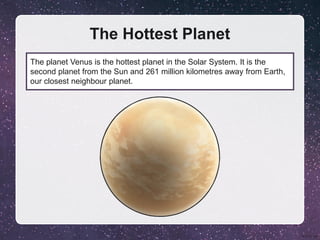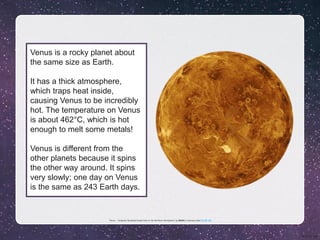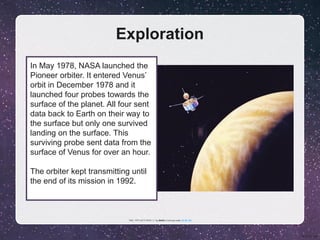Venus is the hottest planet in the solar system with an average surface temperature of 462°C due to its dense carbon dioxide atmosphere. It is similar in size to Earth but spins clockwise, opposite the direction of most planets. Early space probes helped discover conditions on Venus' surface, which is too hot for humans to explore directly. Later missions in the 20th century, like Magellan, mapped Venus' surface in detail using radar.















